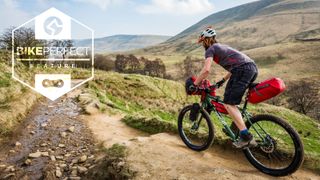


Pedaling too slowly puts a lot of stress on leg muscles, but pedaling too fast reduces economy and drives up heart and respiratory rates. There isn’t one specific cadence that works best for all cyclists. To avoid this, check in on your breathing and RPE every few minutes and evaluate whether it’s still where it should be based on your goals for the climb. Pretty soon after that, you’re stopped or reduced to a crawling pace because you blew up. Before you know it, your RPE is 9+ and you’re gasping for breath.

You get focused on the challenge and start creeping your intensity level up. What trips people up is that both RPE and breathing rate can gradually increase as a long climb progresses. Your perceived exertion should be 7-8 out of 10, perhaps starting at 6-7 on long mountain passes. If it’s shallow and rapid, you’re above a sustainable effort level. To climb at a sustainable pace, your breathing will be labored but it should be deep and rhythmic. Prioritize Perceived Exertion and Breathing RateĮffective climbing is a matter of finding the right balance between exertion and comfort, and that balance can change in the middle of ride or even the middle of a climb. Many times you can produce more power outdoors than indoors, but it can also be harder to adapt to changes in pitch and environment outdoors. In 2020, with events cancelled and people spending more time on indoor trainers, we are seeing similar disconnects between the power riders can sustain on virtual climbs and outdoor climb. This is even more prevalent in multi-day events because most cyclists have less experience dealing with the stress of back-to-back big days on the bike.
Windy hill mtb ride software#
Your sustainable climbing power might be 285 watts according to the training software you use, but on Day 3, riding into a headwind at 10,000 feet above sea level, your sustainable power might be 20 watts lower – or more.Īt every event I went to over the past several years I saw cyclists ride themselves into the ground by trusting the numbers they’re “supposed” to be able to maintain over the feedback their bodies were sending them. Riders get themselves in trouble when they have a rigid mindset about power outputs. They can be great pacing tools, as well, as long as you take other information into consideration. Many of us ride with power meters and they are great training tools. Attacking the bottom of a climb may be necessary and a good tactic in a race, but in non-competitive events or timed-segment racing, a more gradual start will likely allow you to maintain a steadier, more comfortable, and typically faster pace.ĭon’t Rely Too Heavily On Your Power Meter Whether it’s an hour-long grind up a mountain pass or a big rolling hill, going harder at the bottom is rarely the fastest way to get to the top. Don’t Start Climbing Too HardĪ lot of people ride away from me at the bottom of a climb, but I often catch up to them within a few minutes. Here are the cycling tips for climbing that I share with riders.

Rides with a lot of climbing – even 10,000+ feet in a day – don’t have to be intimidating. In many cases, they’re more concerned about the amount of climbing than about the stage distances or the hours on the bike. When events or tours post their route details (or even virtual routes these days) a lot of people get hung up on the vertical gain. Climbing is the most intimidating aspect of many cycling events.


 0 kommentar(er)
0 kommentar(er)
